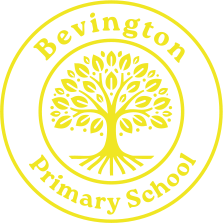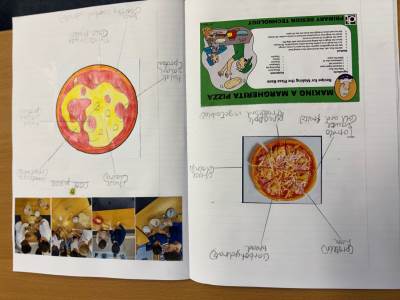Design & Technology
At Bevington, Design and Technology is a fundamental part of our curriculum. It combines creativity, critical thinking, and real-world application to give pupils the opportunity to design, make and evaluate purposeful products. Through structured and progressive units, children learn how to turn their ideas into tangible outcomes—making decisions, taking risks, and solving problems along the way. They leave us with not only technical knowledge, but the confidence and imagination to improve the world around them.
DT
Intent
Our DT curriculum is designed to give children a deep understanding of how designed products meet real needs. Every project is underpinned by six key principles that guide all learning:
- User – Who is the product for?
- Purpose – What problem does the product solve?
- Functionality – How does it work?
- Design Decisions – Are choices made by the child purposeful and justified?
- Innovation – Is the child building on or improving existing ideas?
- Authenticity – Could the product exist in the real world and be tested?
We want our pupils to appreciate that good design solves problems—big and small. They learn that design is not just about decoration but about creating solutions that are functional, meaningful and responsive to the needs of others. Our curriculum fosters children’s curiosity about the designed world, while building resilience through iterative learning.
Key aims of our curriculum include:
- Developing the creative, technical and practical expertise needed to perform everyday tasks confidently.
- Building and applying a wide base of knowledge to design and make high-quality products.
- Teaching children to critique, evaluate and improve their own work and that of others.
- Understanding nutrition and learning to cook in a way that supports healthy living.
Implementation
Design and Technology is taught through three block units per year, one per term. This immersive approach ensures pupils can engage deeply with each phase of the design process. Every project is structured around a three-part teaching model:
- IDEA – Investigate, Disassemble, Evaluate, Analyse
In these sessions, children explore existing products and learn about materials, structures, functions and users. They examine the purpose and workings of real-life items—thinking critically about how and why they were made. They learn to deconstruct designs, ask questions, and gather ideas for their own work. This stage builds the conceptual foundation of the unit.
- FPT – Focused Practical Tasks
Children are explicitly taught the technical and practical skills required for their final design. This may include measuring, cutting, joining, shaping, mixing, testing or programming. During these teacher-led sessions, all children carry out the same task to practise a key skill—ensuring that no child is left behind and that they have the necessary competence to design and make independently later. This stage supports precision and accuracy.
- DME – Design, Make and Evaluate
This is the final stage where children apply their new knowledge. They develop their own design brief and specification, considering the intended user and purpose. Pupils then create their own product using materials, techniques and mechanisms previously explored. Finally, they evaluate their finished product against their design criteria, considering functionality, aesthetic and the effectiveness of their process.
The iterative nature of the curriculum means children revisit and build on prior learning. They develop an increasing independence in their decision-making, tool use, and ability to justify their choices. Cross-curricular links are purposeful—such as drawing on Science to understand electricity or Geography to reflect on sustainability.
Across all phases, children are exposed to a broad range of content:
- Cooking and Nutrition (e.g. making pasta salads, healthy wraps, seasonal dishes)
- Textiles (e.g. hand-stitched pouches, sewn book covers)
- Structures (e.g. bridges, towers, shelters)
- Mechanisms and Mechanical Systems (e.g. pop-up books, levered toys, automata)
- Electrical Systems (e.g. nightlights, buzz games)
- Programming and Control (e.g. Micro:bit projects, controllable vehicles)
Each unit is tailored to be age-appropriate, testable, and rooted in real-life contexts. Teachers are supported with a clear long-term plan, detailed schemes of work, progression frameworks, and technical vocabulary banks.
Impact
The impact of our DT curriculum is visible in the confidence, skill and creativity children demonstrate when engaging with real-world problems. By the end of Key Stage 2, Bevington pupils are able to:
- Work confidently through a design cycle, from research and specification to testing and evaluation.
- Make informed design decisions, using a growing bank of technical vocabulary and practical techniques.
- Produce high-quality, functional and thoughtful outcomes that reflect their learning and understanding.
- Critically evaluate their work, identifying ways to improve and adapt in response to testing.
- Cook a variety of simple meals and understand the principles of nutrition, seasonality and food provenance.
Their knowledge is not shallow or isolated—it is embedded through repetition, practical exploration and purposeful application. Our children become resourceful, resilient and reflective learners. More importantly, they begin to see themselves as designers—capable of creating and improving the world around them.





